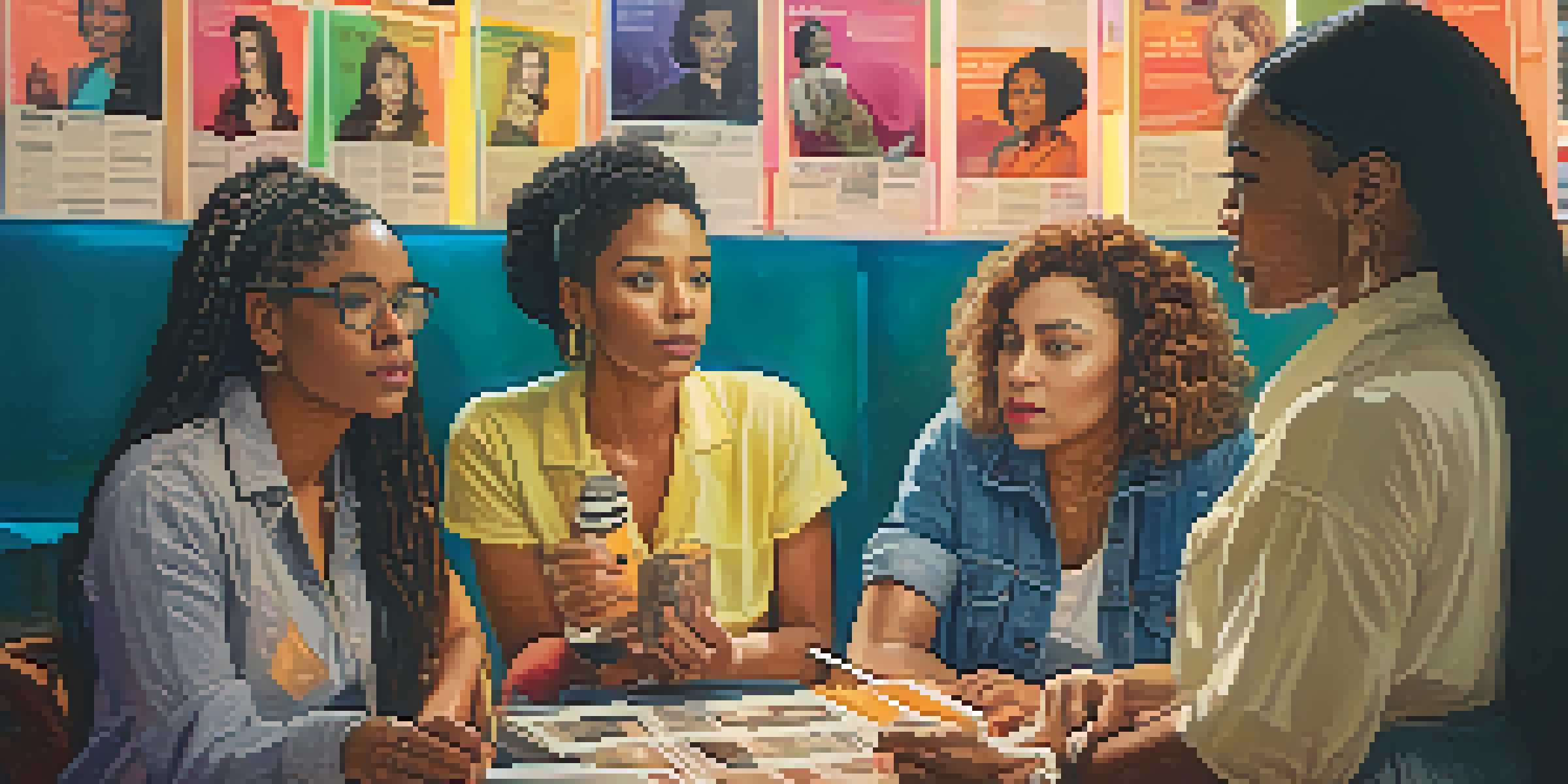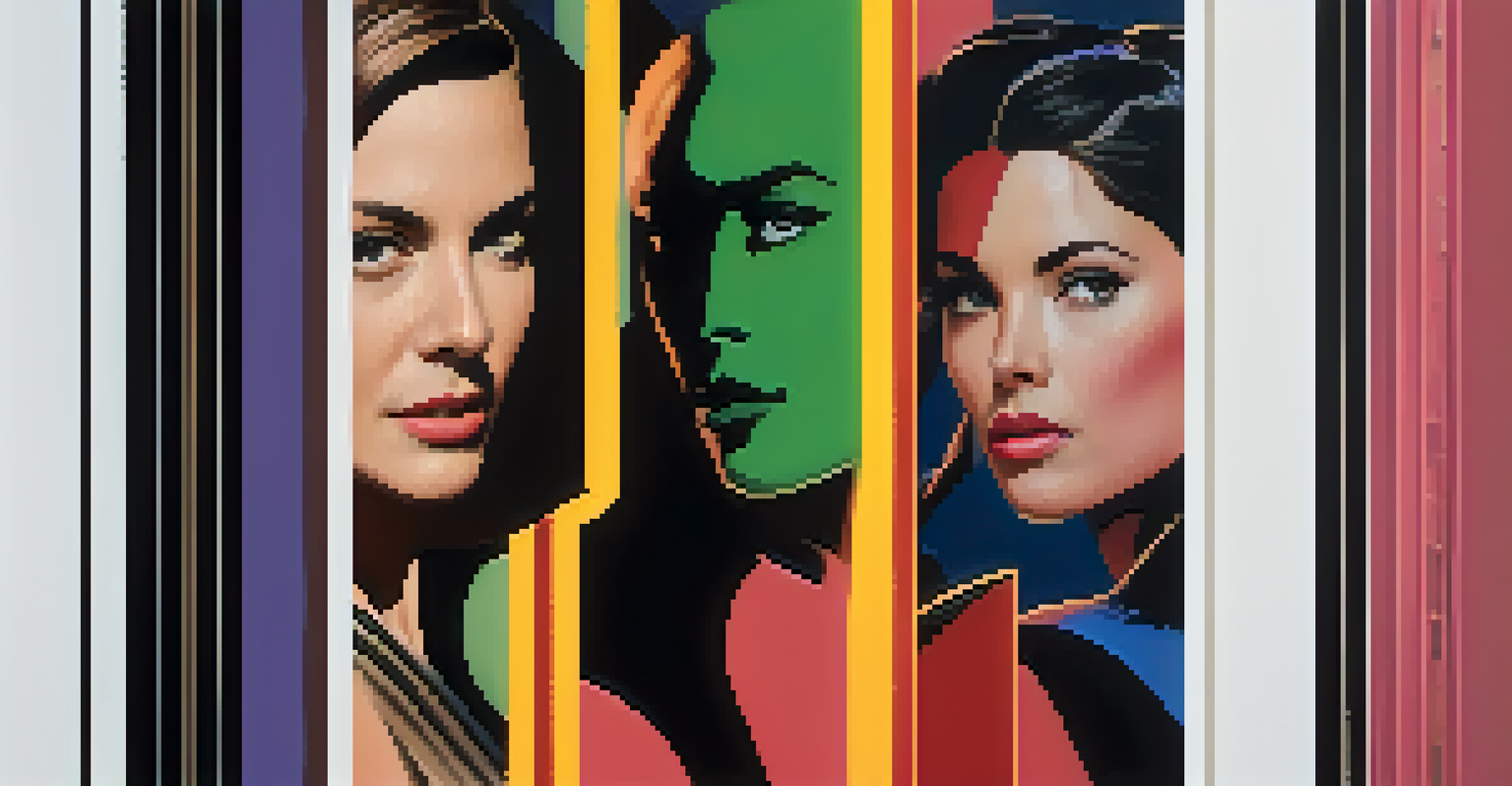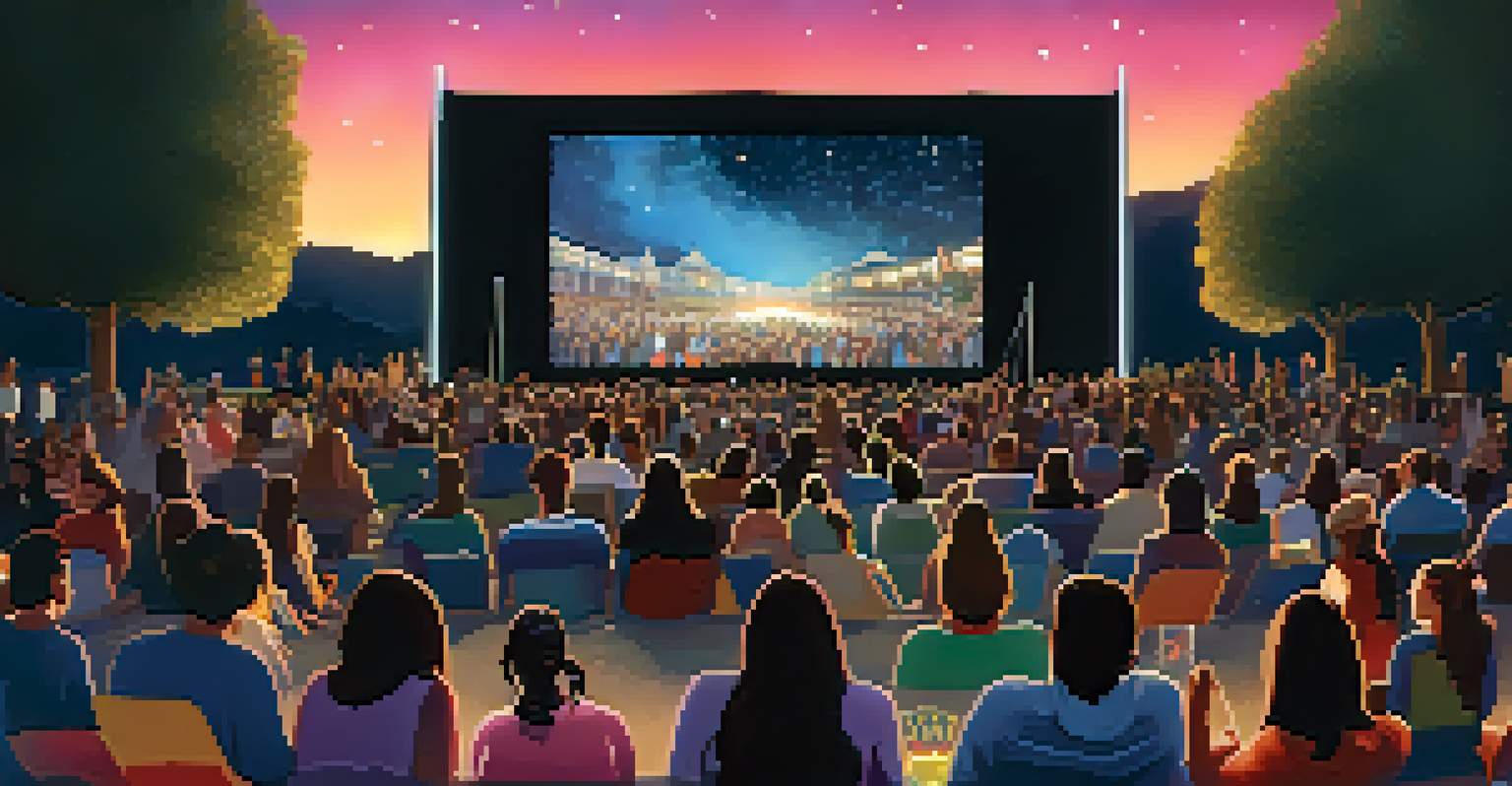Feminist Perspectives: The Evolution of Film Theory

Understanding Feminist Film Theory: A Brief Overview
Feminist film theory emerged in the late 20th century as a response to the male-dominated narratives in cinema. It seeks to analyze how films construct gender roles and portray women. By examining films through a feminist lens, scholars aim to understand the implications these portrayals have on society and culture.
The personal is political.
The theory challenges traditional views by questioning the male gaze, a term coined by Laura Mulvey. This concept highlights how films often objectify women, turning them into mere subjects for male pleasure. By recognizing this dynamic, feminist theorists advocate for a more equitable representation of genders in film.
Ultimately, feminist film theory is about empowerment and redefinition. It encourages audiences to critically engage with what they watch and consider how narratives can either reinforce or challenge societal norms surrounding gender.
The Historical Context of Feminist Film Theory's Emergence
Feminist film theory did not emerge in a vacuum; it was influenced by broader social movements, including feminism itself. The late 1960s and 1970s were pivotal decades, marked by activism for women's rights that paralleled the evolution of film. This context provided a fertile ground for questioning established narratives and demanding diverse representation in cinema.

As filmmakers and critics began to recognize the lack of female voices in film, they sought to highlight women's experiences and stories. This shift challenged the status quo and opened the door for new genres that centered female protagonists. The growing demand for representation in film coincided with the feminist movement's call for equality in various aspects of society.
Feminist Film Theory's Origins
Emerging in the late 20th century, feminist film theory critiques male-dominated narratives and advocates for equitable representation of women in cinema.
In essence, the historical backdrop of feminist film theory is rooted in a quest for recognition and respect. Understanding this context allows us to appreciate the significance of feminist perspectives in reshaping cinematic narratives.
Key Figures in Feminist Film Theory and Their Contributions
Several key figures have significantly shaped feminist film theory over the years. Laura Mulvey is often regarded as a pioneer, particularly with her influential essay 'Visual Pleasure and Narrative Cinema.' She introduced the concept of the male gaze, which remains central to feminist analysis of film today.
Feminism is for everybody.
Another important figure is bell hooks, whose work expands the conversation to consider race and class alongside gender. Hooks argues for an intersectional approach, emphasizing how different identities affect a person's experience of media. Her contributions remind us that feminism in film must be inclusive and representative of diverse voices.
These theorists, among others, have not only critiqued existing films but also inspired new filmmakers to create works that challenge traditional narratives. Their insights have paved the way for a more nuanced understanding of gender in cinema, encouraging audiences to seek out and support diverse storytelling.
The Impact of Feminist Film Theory on Cinema and Society
Feminist film theory has had a profound impact on both cinema and society. By challenging the traditional portrayals of women, it has influenced filmmakers to create more complex and authentic female characters. This shift not only enriches storytelling but also empowers audiences by providing diverse role models.
Moreover, the theory has sparked broader discussions about gender representation across various media platforms. As audiences become more aware of these issues, they demand better representation and more equitable practices within the industry. This increased scrutiny has led to more films that prioritize women's stories and experiences.
Intersectionality in Film Analysis
The incorporation of intersectionality broadens feminist film theory by recognizing how overlapping identities, such as race and class, influence women's representation in film.
Ultimately, the ripple effects of feminist film theory extend beyond cinema, encouraging societal change. It inspires a re-examination of cultural norms and promotes a more inclusive dialogue about gender, making it a vital part of contemporary discourse.
Intersectionality: Broadening the Scope of Feminist Film Theory
Intersectionality is a crucial concept that has enriched feminist film theory, recognizing that gender does not exist in isolation. Instead, factors such as race, class, and sexuality intersect to shape individual experiences. This understanding has prompted scholars and filmmakers alike to consider how these overlapping identities influence representation in film.
By incorporating intersectional perspectives, feminist film theory advocates for a more nuanced approach to storytelling. It encourages filmmakers to portray characters that reflect the diversity of women's experiences, rather than relying on monolithic representations. This shift not only enhances authenticity but also resonates more deeply with audiences.
Incorporating intersectionality into feminist film theory has led to a broader range of stories being told. By embracing this complexity, the film industry can move toward a more inclusive narrative landscape that reflects the realities of all women's lives.
Contemporary Trends in Feminist Film Theory and Practice
In recent years, feminist film theory has evolved to address contemporary issues within the industry, such as the representation of LGBTQ+ individuals and the portrayal of women of color. These trends reflect a growing recognition of the need for diverse voices in filmmaking. This shift not only enriches cinematic narratives but also challenges outdated stereotypes.
Moreover, the rise of social media has empowered audiences to voice their opinions on representation in film. Platforms like Twitter and Instagram allow viewers to engage in discussions about gender and diversity. This democratization of critique has led to increased accountability for filmmakers and studios, pushing them to prioritize inclusivity.
Future Challenges and Innovations
While feminist film theory has made progress, ongoing challenges in representation present opportunities for emerging filmmakers to innovate and reshape cinematic narratives.
As we look to the future, contemporary feminist film theory emphasizes the importance of collaboration and community. By fostering supportive networks among filmmakers, critics, and audiences, the movement aims to create a more equitable industry that values diverse perspectives.
The Future of Feminist Film Theory: Challenges and Opportunities
While feminist film theory has made significant strides, challenges remain in achieving true representation and equity in the film industry. The fight against entrenched stereotypes and biases continues, as does the need for more women and marginalized voices behind the camera. However, these challenges also present opportunities for growth and innovation in filmmaking.
Emerging filmmakers are increasingly drawing on feminist principles to create compelling stories that resonate with today's audiences. This new wave of cinema is characterized by its willingness to experiment and break conventions, offering fresh perspectives on gender and identity. Such creative endeavors not only enrich the film landscape but also inspire future generations of filmmakers.

Looking ahead, the future of feminist film theory hinges on collaboration and advocacy. By supporting diverse voices and pushing for systemic changes within the industry, we can ensure that feminist perspectives continue to flourish and shape the cinematic narrative.